Clipper Race: Coming To America
Published on March 21st, 2016
(March 21, 2016; Day 1) – Following the Le Mans start from Qingdao in light winds and sun at 0100 UTC, 0900 local time today, the Clipper Round the World Yacht Race fleet began the ninth of 14 races as it heads across the Pacific Ocean to Seattle, USA from Qingdao, China.
The Seattle Pacific Challenge will push the twelve teams to their limits in the longest single ocean crossing of the entire circumnavigation. Clipper Race Founder and Chairman Sir Robin Knox-Johnston has sailed the Pacific Ocean many times, including when he became the first person to sail solo and non-stop around the world in 1968-69.
“The Pacific is a huge ocean and this leg is a long one,” says Sir Robin. “The feeling of isolation is probably the biggest challenge our crew is about to face because they’ve already seen the sort of weather they’ll get. In that respect it’s rather like the Southern Ocean with big seas and strong winds. So I think it’s going to be the length of time they’re isolated from the rest of the world that is going to be the hardest thing for them to cope with.”
The crossing is estimated to take one month with the arrival window in Seattle from 15-20 April and Sir Robin’s remarks about feeling isolated are compounded by the fact that at times, the teams’ nearest neighbours could be those on the International Space Station some 300 miles above them.
After the Parade of Sail in China’s Sailing City on Sunday, the fleet motor-sailed approximately 130 nautical miles offshore to a virtual mark in order to avoid the high volume of fish traps and nets. With Daniel Smith of Derry~Londonderry~Doire, nominated to be Lead Skipper, he coordinated the Le Mans start at 0100 UTC (0900 local time) and reported back: “We postponed the planned start by one hour due to large numbers of fishing boats and tankers covering our AIS screen which is why we started racing at 0900 rather than 0800.
“As the Clipper Race fleet picked its way between fishing boats, nets and tankers a space opened up in front of us allowing us to line up all twelve yachts and motor south-east for 10 minutes without being disturbed. This is what we needed in order to set up our Le Mans start line.
“At 0900 the race began and after 0910 teams were free to change their sail plan and course. LMAX Exchange and Unicef ducked away to the south under spinnakers while others held their course with white sails.
“The wind has now gone aft and the fleet is heading south-east in light breeze under spinnakers, dodging fishing nets and waving away curious fishermen as we go.”
Race Director Justin Taylor highlights the main tactical and meteorological points of the crossing: “We took the decision to start the race offshore in order to ensure the safest conditions for the teams because outside Qingdao there are so many fishing vessels and so much fishing gear that there are simply too many obstacles that could hamper the start.
“Now that the race has begun, the first key milestone will be off the southern tip of Japan. Then tactics come in to play again as Skippers are faced with the age-old dilemma: take the shortest or great circle route and risk headwinds or take the southern route which is longer but with following wind.
“The crew will also have to contend with finding the strongest part of the favourable Japan Current. Depending on the wind direction the sea state could be very difficult if it is northerly, with steep waves that have no backs to them, meaning the yachts will be airborne as they drop out of them.
“As the fleet reaches the latitude of Tokyo the teams will start to head offshore more and start to find huge Pacific rollers that pick up a yacht and allow it to surf at 30 knots down into the trough ahead. Positioning of the yacht will be crucial. Ideally looking for the gap between the top of the near stationary North Pacific High and the bottom of the low pressure systems relentlessly marching eastward,” added Justin.
Keeping a competitive focus, preserving kit and looking after crew morale will be a constant challenge. For Visit Seattle, this race is a homecoming for the team and Skipper Huw Fernie is looking forward to the reception after what promises to be a long and arduous leg.
“If I were to sum up what I think this race will be like, I’d say cold, wet, windy and challenging. It’ll be light at the beginning but then the nitty gritty of this race starts, so it’s just head down, plough through it and get to Seattle!
“The duration of this race is phenomenal. The length of it lets you get your teeth into the challenge. We had some very tough conditions to get through in the last race from Da Nang, Vietnam, to Qingdao, but it took us two weeks. Now we are going to have to face tougher conditions for twice as long. That is our biggest challenge.”
Approximately 3000 miles and 15 days into the race, another milestone will occur when the teams cross the International Date Line, crossing from the eastern hemisphere to the western hemisphere, resulting in living another day in the calendar and earning the right to have a golden dragon tattoo.
In the closing stages, the variable conditions off the American coast can prove to be frustrating in the final push before crews step onto dry land for the first time in a month.
Ralph Morton, Executive Director, Seattle Sports Commission, a partner of the Visit Seattle yacht, added: “The City of Seattle is defined by a seafaring history that goes back to the native Americans and continues today with mariners and the surrounding waters playing an important part of our culture.
“The sea is what connects Seattle to the world, as an important member of the Pacific Rim community. The Clipper Race honours the many courageous voyagers who have sailed and crossed the mighty Pacific Ocean. From Australia to Asia to the Americas, the Clipper Race unites many nations and many sailors who grew up on or near the Pacific Ocean.
This is the first time in the race’s 20 year history that the fleet will visit Seattle. From there the teams will race to Panama, New York, Derry-Londonderry in Northern Ireland, Den Helder in the Netherlands and on to Race Finish in London on 30 July.
Event Website – Race Viewer – Team Reports – Facebook
Report by event media.
Background: The 40,000 mile Clipper 2015-16 Round the World Yacht Race began in London, UK on August 30 for the fleet of twelve identical Tony Castro designed Clipper 70s. The series is divided into 16 individual races, with the team with the best cumulative score winning the Clipper Race Trophy. Each team is led by a professional skipper with an all-amateur crew.
The fleet departed on March 21 from Qingdao, China for the 6,637 mile course to Seattle, USA and are expected to arrive between April 15 to 20.
The ports along the race route are Rio de Janeiro, Brazil; Cape Town, South Africa; Albany, Sydney, Hobart and Airlie Beach, Australia; Da Nang, Vietnam; Qingdao, China; Seattle, USA; Panama; New York, USA; Derry-Londonderry, Ireland; and Den Helder, Netherlands before returning to London by late July.


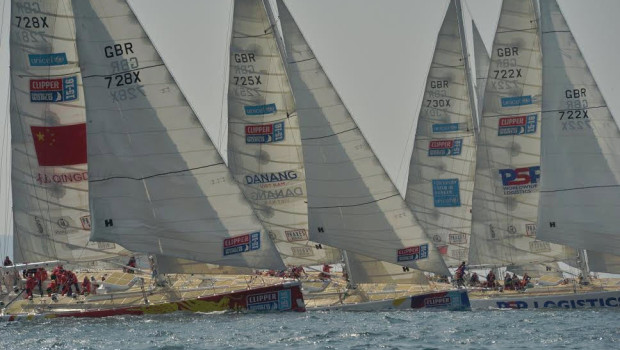


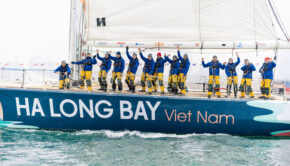
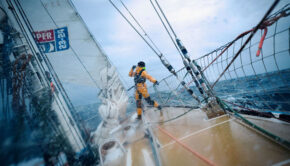
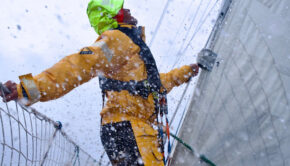
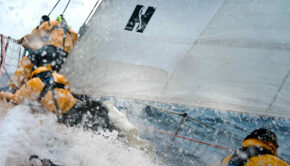
 We’ll keep your information safe.
We’ll keep your information safe.